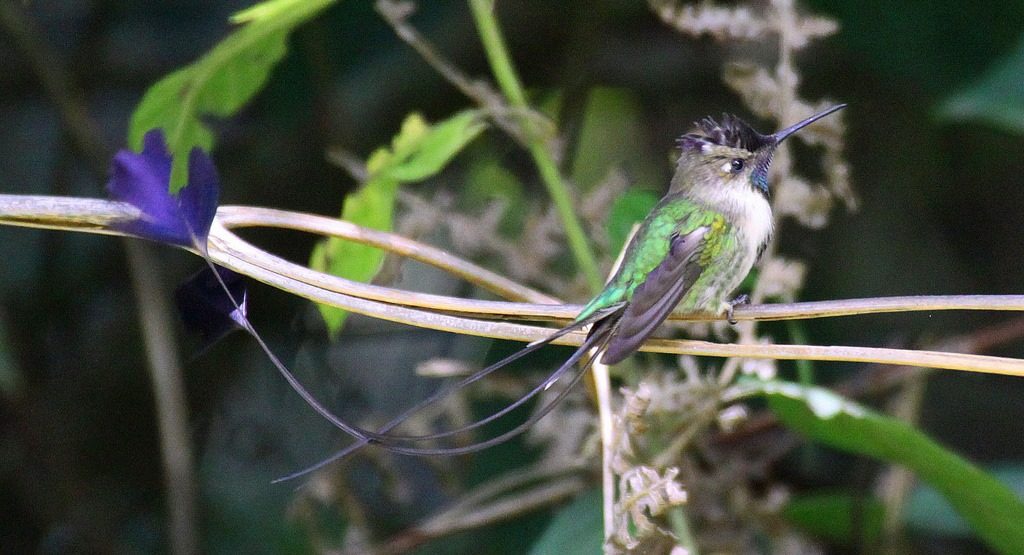The Marvelous Spatuletail, or “Loddigesia Mirabilis,” is the most beautiful bird in nature.
It is only 15 cm long. The medium-sized hummingbird is adorned with different colors—white, green, and bronze—with blue crest feathers, a brilliant turquoise gorget, and black lines on its white underparts. The bird is the sexually dimorphic and only member of the monotypic genus Loddigesia.
This bird can be found at the forest edges of the Rio Utcubamba region in Peru. This Peruvian endemic bird was found in 1835 by Andrew Matthews, a bird collector for George Loddiges, for whom the genus is named.
The bird is extremely unique in having just four feathers in its tail. However, a male bird has two long racquet-shaped outer tail feathers that cross each other and end in large violet-blue discs, or “spatules.”. The breeding season starts from late October to early May, which coincides with the rainy season.
The marvelous spatuletail is unique among birds in having just four feathers in its tail. Its most remarkable feature is the male’s two long racquet-shaped outer tail feathers that cross each other and end in large violet-blue discs, or “spatules.”. The marvelous spatuletail bird can move them independently.
The population of Marvellous spatuletail is in limited numbers, and it is listed as endangered on the IUCN Red List of Threatened Species. The population is estimated to fall between 300 and 1000 mature individuals and is equivalent to 375–1,499 individuals in total, rounded here to 350–1,500 individuals.
Another threat to this species is hunting by locals, who believe that the male marvelous spatuletail’s heart is an aphrodisiac, which may explain the species’ skewed sex ratio. Most adult males are frequently killed with slingshots and thus outnumbered by females and immature males.
The bird’s call has been described as a thin, sweet, rising ‘wsst’; however, when displayed to the female, the male’s marvelous spatuletail produces a snapping sound. The Marvelous Spatuletail has been featured in the PBS TV series Nature and on BBC TV. The BBC camera team was also the first to record the male marvelous spatuletail hummingbird displaying to a female and his whole mating display from start to finish.
The male displays a stunning dance to a female by hovering in front of her, waving his tail feathers. Therefore, the courtship display of the male Marvelous spatuletail is so energetically demanding that it can only be performed for very short periods of time.
The Marvelous Spatuletail feeds consist of nectar, red-flowered lily, and Bomarea formosissima. This is a solitary bird for most of the year, and moves around continually throughout the day, flying through dense thickets faster and with greater maneuverability than other hummingbirds.
Therefore, in 2006, the American Bird Conservancy provided support to protect and manage 100 acres of significant habitat for the jewel of this bird. They’ve planted more than 30,000 saplings of native trees and bushes to increase the bird’s numbers, which is the best of its kind in Peru. The marvelous spatuletail hummingbird is among the rarest and most striking of birds, and it is uncommon due to its extreme mating behavior. The bird’s body size is a slightly fluffy ping-pong ball, and the beak is the size of a matchstick.
Read More: Green and Black Fruit Eater
Video Link
Source: Wikipedia
















